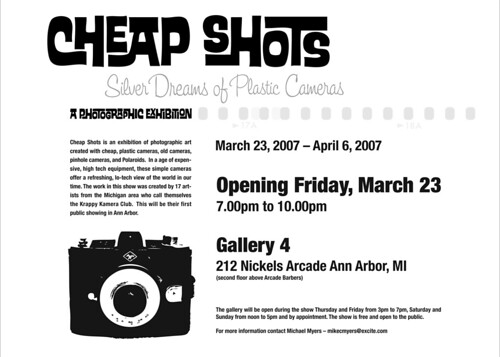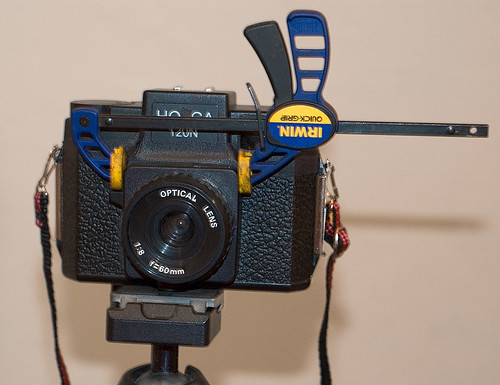The exposure math of the Holga has always been a mystery to me, because it seems to violate the reliable Sunny 16 Rule. The rule basically states that if you set your shutter speed to the ISO of your film and the aperture to f/16, you’ll get a solid exposure in direct sunlight. (For example, if you had ISO 50 film, you’d set your shutter speed to the nearest number, likely 1/60.)
Admittedly, every Holga is a bit different, but I did have one of my Holgas tested with a shutter speed tester, and it came in at a fairly reliable 1/100 sec, which is what it’s supposed to be. As I found out while I measured for The facts about Holga apertures, a stock Holga has an aperture of f/13.3, regardless of the position of the sunny/cloudy switch. So with aperture of roughly f/13 and a shutter speed of 1/100, you should be able to shoot ISO 100 film in bright sunlight and have a proper exposure. (Technically about a half stop over as we’re at f/13.3 instead of 16, but that’s well within the exposure latitude of modern print films, so you should just get a little extra shadow detail).
So why the hell do I have to shoot ISO 200 or 400 film in bright sunlight to get a decent exposure, while I get underexposed mud with ISO 100, which should work perfectly? After thinking about it for a while, I strongly suspected that the plastic "Optical Lens" must have a good deal of transmission loss and was blocking two stops of light, so I set up a test: I pointed a Canon 580EX flash fitted with a Sto-Fen Omni-Bounce diffuser straight into a Holga with a Sekonic L-558R meter (which is extremely accurate and consistent) stuck in the back. I metered the flash through the camera five times with and five times without the lens in place and was fucking shocked by what I discovered: there was effectively no transmission loss. The readings averaged out to differ by only about 1/6 of a stop.
WTF??!? It’s not the lens. It’s not the aperture. It’s probably not the shutter: while I can allow for the possibility that the speed changes over time—it was over a year ago I had it tested—I consistently have the same exposure requirements with all of the 8-ish Holgas I have. What’s left? Light-eating gnomes?



